Original Owner: Ohio Teen Turned His Mustang Dream into Reality

April 17 marks sixty years since the Ford Mustang’s public debut at the 1964 New York World’s Fair. The original pony car immediately became a pop-culture and automotive phenom, and it remains one of the most impactful cars in history. We’re celebrating with stories of the events surrounding the Mustang’s launch, the history of the early cars, and tales from owners. Click here to follow along with our multi-week 60 Years of Mustang coverage. -Ed.
Ford built the one-millionth Mustang 11 months after introducing the sporty compact sensation at the World’s Fair in Queens, New York, on April 17, 1964. The Mustang’s broad appeal crossed demographic boundaries, feeding voracious market demand that kept three auto plants humming.
Many drivers dreamed of owning a Mustang, including 16-year-old Bill Whitmire in Dennison, Ohio, a tiny rural town about 95 miles south of Cleveland. The young man became smitten with the Mustang after seeing photos and TV coverage from its World’s Fair introduction. While others fantasized, he planned. At the time, Whitmire was bagging groceries and stocking shelves at the local IGA supermarket, saving all he could to buy a car.
Fitting with Ford’s “Total Performance” mantra in the 1960s, the automaker added the 271-horsepower High-Performance 289-cubic-inch V-8 to the Mustang’s option roster in summer, 1964. That’s when Whitmire decided on his target car: a fastback with that engine, plus the GT package. The High-Performance 289 (“Hi-Po” for short) was indicated by a K as the fifth character in the vehicle identification number, hence the nickname, “K-code.”
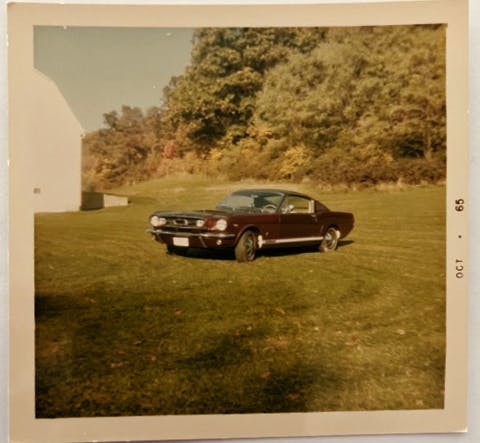

That combination would not be available in a Mustang until the following year, which would be good timing for Whitmire. The fastback reached Ford dealers in September 1964 as part of a switchover from the early cars, commonly referred to as “1964.5″ models, to those produced starting in August. (All were titled as 1965s, however.) The GT package seen on the World’s Fair fastback display car arrived in time for the Mustang’s one-year anniversary in April 1965.
“I just loved that fastback design,” Whitmire recalled for Hagerty. “I wanted a four-speed and the most horsepower they had. The Vintage Burgundy color was an easy decision for me, and I chose the Palomino interior.”
Fifty-nine years later, Whitmire still owns his ’65 Mustang GT, which served a daily driver and a weekend drag racer for more than 10 years. “I never intended to keep the car this long. I took really good care of it and kept it preserved because I loved it,” he said.
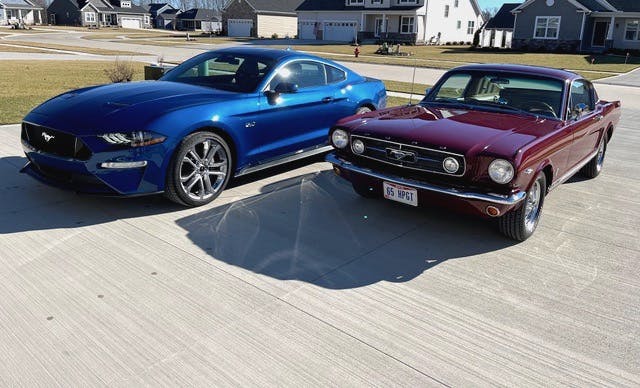
After long and proper storage, Whitmire had the Mustang repainted in 2002, and he refreshed and upgraded the mechanicals from 2015 to 2023. He and his wife, Kathy, still take his classic Mustang out for plenty of exercise and also enjoy driving a 2022 Mustang GT that they plan to drag-race. Along the way, the ’65 became an important family memory-maker.
Ford Family
Whitmire grew up in a “Ford family” at a time when Big Three and AMC brand loyalties ran deep.
“Dad always owned Fords and worked on his own cars,” he said. “My older brother drag-raced a couple of ’55 and ’56 Fords. I helped when he worked on them.”
Being around fast cars made young Bill want his own. At 14, he began doing odd jobs for neighbors—mowing grass, cleaning out garages, painting, and washing windows. Just before his 16th birthday, he landed a supermarket job and his first steady paycheck.
“I didn’t buy anything I didn’t need, because I knew I wanted to buy a car when I turned 17. I was able to save just a little over a thousand dollars, but my dad was confident enough in me that he took out a loan to help me get the Mustang. I paid him $70 per month for 30 months. That was a lot back then. I still have the loan papers he signed. He also promised my brother and me that if we bought our own cars, he’d put them on his insurance policy.”
Insurance, though, became a sticky issue. A month after adding Bill’s new car, his father’s entire policy was cancelled due to the Mustang’s high-performance engine. A second company that accepted them knowing about the Mustang ultimately cancelled two months later.
“My dad never complained about it to me. We eventually got insurance,” Whitmire said.
The Price of Power
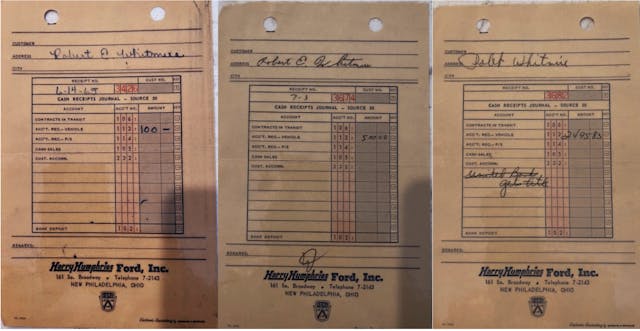
On June 14, 1965, around high school graduation, Whitmire ordered his Mustang from Harry Humphries Ford in New Philadelphia, Ohio, leaving a $100 deposit. He paid another $500 in early July and then the balance of $2495 when he took delivery mid-month, for a $3095 total. He turned 18 that October.
Aside from those three receipts, Whitmire no longer has other sale documentation. So, we did some math. The K-code engine package was pricey at $334, and that was in addition to the mandatory cost of ordering it over a base V-8 model—$2697 in the 1965 fastback’s case. The mandatory four-speed added another $188. (A three-speed automatic was available for ’66 and ’67 K-code Mustangs.) The GT package, if you wanted it, was $165. That totaled $3384, so it seems Whitmire got a discount of about $290.
Despite Ford’s “Total Performance” hoopla, performance options were rarely ordered on first-gen Mustangs. The base V-8 was popular, but buyers scooped up just 7273 K-code Mustangs for 1965 (including “1964.5” cars), then 5469 for 1966. Just 489 were ordered in 1967, when the new optional 390-cubic-inch big-block V-8 delivered more bang for the buck. Out of 1.7 million 1965–67 Mustangs made, fewer than 1 percent were K-codes.
Factory Basics: 1965 Mustang GT 2+2
Ford referred to the Mustang fastback as the 2+2, borrowing a term from Ferrari. The Mustang brochure even boasted, “Europe no longer has a monopoly on this kind of flair and fire.”
The 2+2 added practicality. When lowered, the fold-down rear seatback formed a carpeted luggage area that could extend into the trunk to carry long items, including skis. Functional louvers on the C-pillars opened from the inside to improve flow-through ventilation.

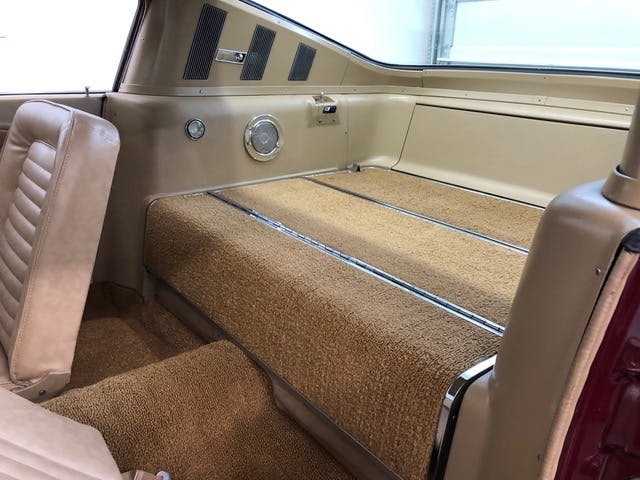
Engine options were the same as for the other body styles, which, starting in September 1964 included a standard 200-cubic-inch six replacing the 170; a 289 two-barrel replacing the 260 V-8; a high-compression A-code 289 four-barrel replacing the low-compression D-code, and the High-Performance 289 continuing. That engine was, of course, the one Carroll Shelby’s operation tweaked for more output in the 289 Cobra and Mustang GT350.
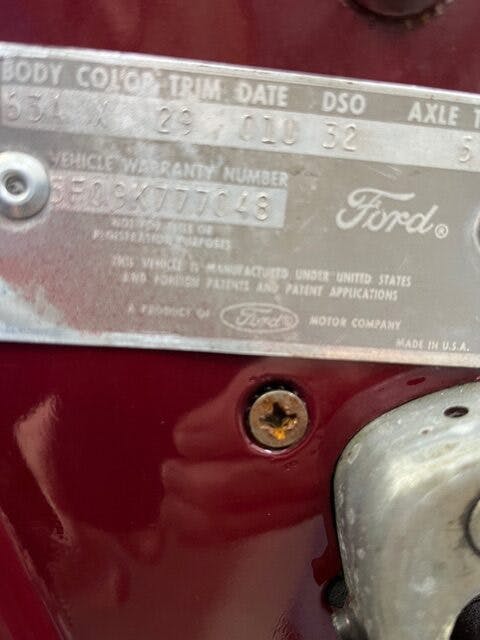
With just over 77,000 produced for 1965, the fastback outpaced the convertible by about 4000 and would continue to do so by an increasingly wide margin through 1973 (including Mach 1 models).
What Made the K-code 289 Tick
The K-code 289 option debuted in the 1963 Fairlane and seemed a natural for the lighter Mustang. It earned the “High Performance” label, starting with 10.5:1 compression versus 10:1 for the A-code 289. The two engines shared small-ish valve sizes (1.78-inch intake and 1.45-inch exhaust), though the K-code’s were operated by a solid-lifter flat-tappet camshaft, versus hydraulic in the A-code. A 600-cfm Autolite 4100 four-barrel carburetor was topped by an open-element air cleaner, and header-type manifolds bolted to a dual-exhaust system.
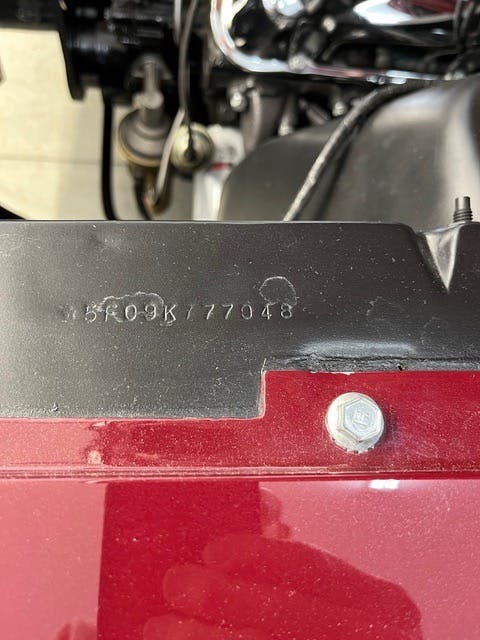
A beefier nodular-iron crankshaft and stronger connecting rods ensured durability for hard usage, while a dual-point distributor gave reliable spark for the 6000-plus rpm the K-code could deliver. Ford rated output at 271 hp at 6000 rpm and 312 lb-ft of torque at 3400 rpm, a healthy bump over the A-code’s 225 hp at 4800 rpm and 305 lb-ft at 3200 rpm (SAE gross ratings.)
Ordering the K-code 289 also netted the buyer the Special Handling Package, with higher-rate springs, heavy-duty shocks, a thicker front anti-roll bar, quicker manual steering, and 6.95 x 14-inch dual-red-stripe tires.
Pony Express
Testing a 1965 Mustang K-code fastback equipped with the 3.89:1 axle ratio, Motor Trend found the 289 revved easily to 6500 rpm, which was sky-high for an American V-8 at the time. The testers found the car gave its best performance when shifted at 6000 rpm: 0–60 in 7.6 seconds, the quarter-mile in 15.9 seconds at 89 mph, and a 120-mph top speed. Car Life magazine recorded similar times.
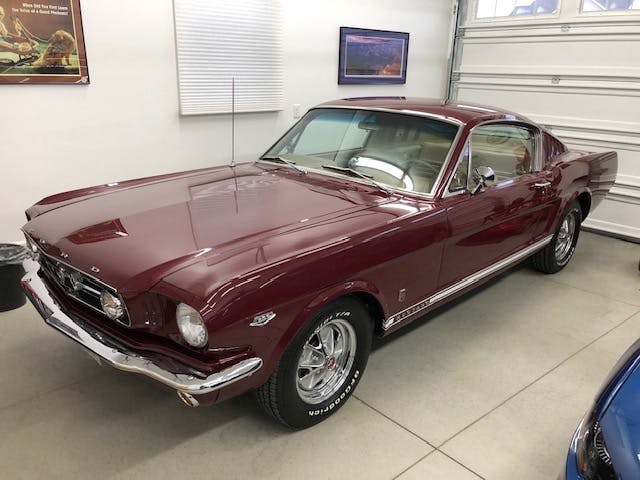
Whitmire’s car came with the more highway-friendly 3.50:1 axle ratio, which the auto magazines estimated would have added a few mph to the top speed while sacrificing just a bit on acceleration. A base-model Pontiac GTO could beat a K-code Mustang in a drag race, but the much lighter Mustang (about 3000 pounds) would do better on a twisty road.
The GT package available with the A- and K-code V-8s added the dual-exhaust system with the “trumpet” tailpipe extensions poking through the rear valance panel; Special Handling Package (already included with K-code); front disc brakes; rocker panel stripes; grille-mounted fog lamps, and a five-dial instrument panel replacing the horizontal speedometer. (That panel became standard on 1966 Mustangs.)
Daily Driver, Weekend Racer
Whitmire bought his Mustang as a daily driver, though it hibernated in the winter months while he drove an old pickup. In exchange for cleaning out his next-door neighbor’s garage, she let Whitmire store his Mustang there in winter.
Whitmire had not originally intended to race the Mustang but soon found himself on many weekends heading to Magnolia Dragway, about 25 miles from home. “I had the racing bug. The Mustang eventually ended up with headers and slicks, and I changed to a lower axle ratio and put traction bars on it. I welded those to the inside of the frame rails, but they’re off now. I’d tow the Mustang to the track with my pickup.”
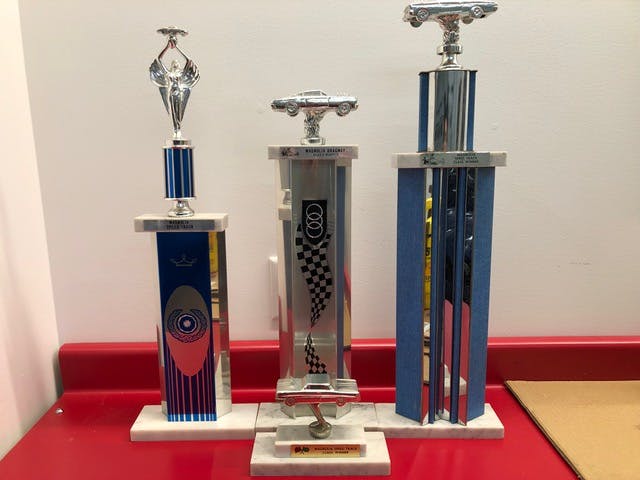
Appropriately enough, Whitmire recalled racing the Mustang in K-Stock. “I also raced at National Trail Raceway in Columbus and Dragway 42 in West Salem. I learned to power-shift, and that four-speed Top Loader would take it. Mine was one of the faster Mustangs at the tracks. I raced it for over 10 years, and I couldn’t guess how many quarter-mile trips it made!”
More Drag Racing
After high school, Whitmire spent 40 years working for a construction manufacturing company, including 25 in management positions. He followed retirement from that with 15 years as service manager for a Harley-Davidson dealer.
With the Mustang retired from racing in the late ’70s, Whitmire built a Thunderbolt clone from a ’64 Fairlane, giving it a 460-cubic-inch Ford big-block he’d pulled from a junkyard Lincoln. He called the car “Backyard Bolt” and raced it until 1989.

He sold the Backyard Bolt and bought a 1987 Thunderbird Top Sportsman car, basically a steel tube chassis with a fiberglass body, and raced in NHRA Comp until 1999. “In 1997, I won the Comp Championship at Norwalk Dragway [now Summit Motorsports Park]. “I was voted ‘Most Improved Driver of the Year.’ That basically meant you were really bad the year before or you got really lucky the year you won.”
Rest And Revival

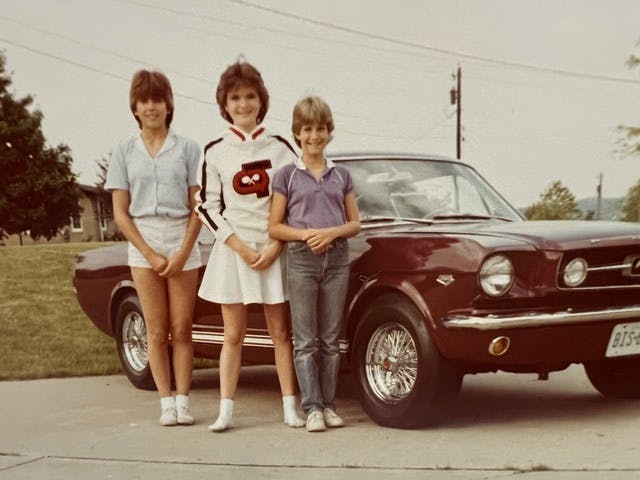
The Mustang went into careful garage storage, with occasional drives. Whitmire and his second wife, Kathy, later moved into a new development near southwest Cleveland. The 2002 repaint (with no rust repair needed) was still looking fresh in 2015 when he decided to go through the car mechanically, adding some upgrades. The interior remains original.
“My main reason for upgrading the car was the possibility that one of my daughters will end up with it, so I wanted it to be a reliable driver,” he said.
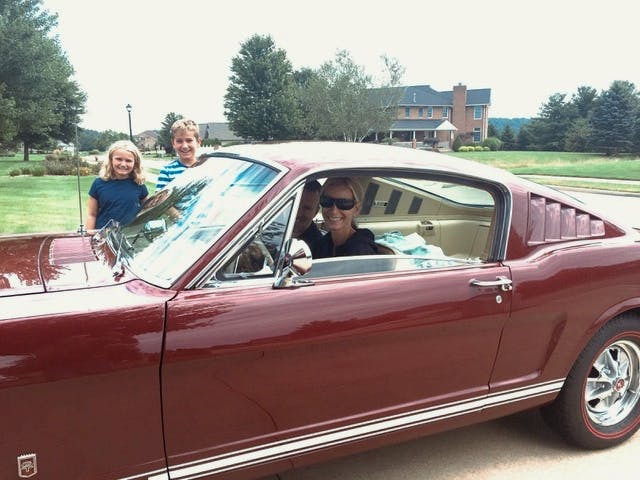
Notably, the original K-code 289 has never been rebuilt. Whitmire cleaned and painted the exhaust manifolds and had a new dual exhaust system installed. The car got new motor and transmission mounts, along with a new alternator, water pump, pulleys, a re-cored radiator, and a five-blade fan. Whitmire had the transmission rebuilt and added a Gear Vendors overdrive. The rebuilt Equa-Lock limited-slip differential retains a 3.50:1 axle ratio.
The original steering box was rebuilt in 2015, gaining aftermarket electric assist in 2020. Brakes and suspension were serviced and refurbished, and the car rolls on new BFGoodrich radials. Finishing touches included a new stereo and speakers, LED headlights that look like the original sealed-beam units, and ceramic coating on the paint and wheels.
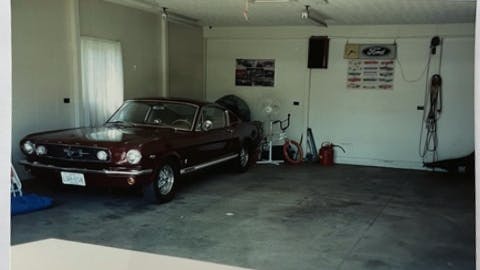
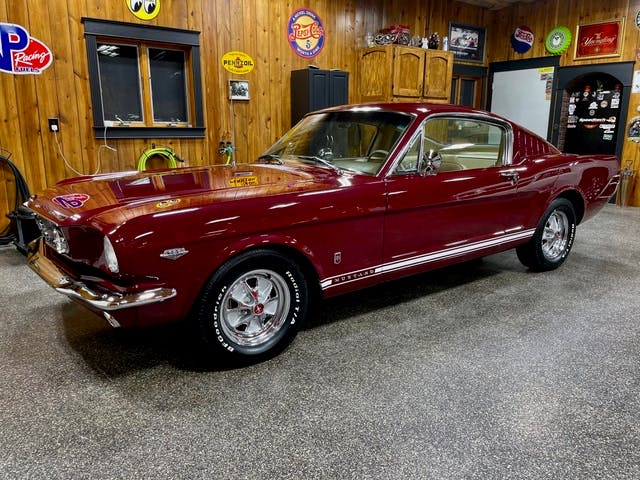
While working on his ’65 Mustang, Whitmire ordered a 50th anniversary 2015 Mustang GT (#336 out of 1964 built). He installed a Roush supercharger but later sold the car to the builder of his home development, who had a car collection. The man had first offered to buy the ’65 for $70,000, but Whitmire was a firm ‘No.’
“I just didn’t want to part with it. I kept telling myself, ‘It’s the first new car you bought. Hang onto it.’”
Mustang Memories
Hagerty: Was the Mustang the only car you wanted, or did you consider anything else?
Whitmire: I really didn’t know until they introduced it at the World’s Fair in New York. If you had TV, you at least got to see it.
Hagerty: How did your father feel about you choosing the K-code Mustang when you were 17?
Whitmire: He trusted me to have the high-power engine. He understood that we were all car people in the family.
Hagerty: What was that first summer after high school like with a brand-new Hi-Po Mustang?
Whitmire: With my high-school buddies, it was the hit of the summer. I remember many races and a couple of tickets from squealing my tires when taking off. We didn’t have a Dairy Queen, but we had a root beer stand and an ice cream parlor where the kids hung out. It was a lot of fun.
Hagerty: How did this Mustang become such an important part of your family?
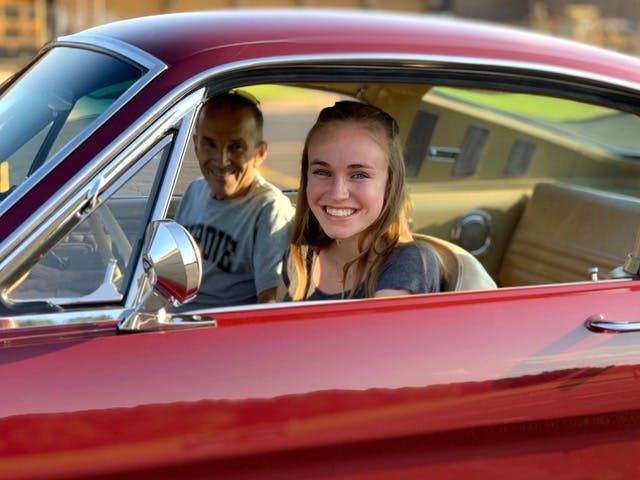

Whitmire: We’ve just had a lot of history and a lot of fun with that car. It’s one reason it won’t be for sale until grandpa passes. I taught both of my daughters to drive stick-shift in the Mustang. They each later got Mustangs of their own. My older daughter still has the ’66 coupe that I bought in bad shape and fixed up. The younger one had a ’74 Mustang II. My two oldest granddaughters, now 25 and 19, also learned to drive stick-shift in my ’65. My grandson is five and a half and loves the Mustang. He calls it his race car.
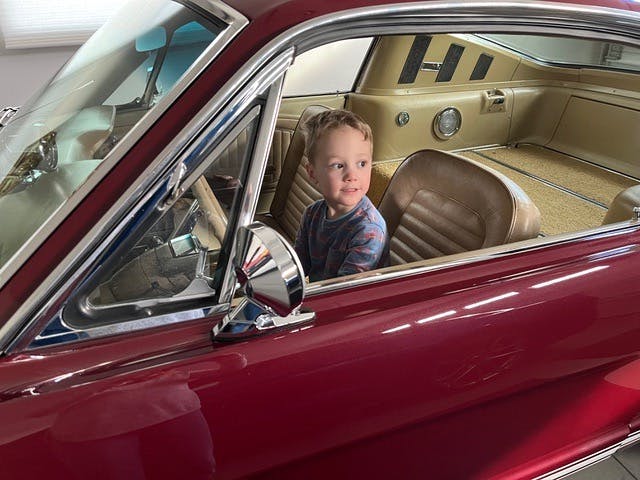
As an aside, when I married Kathy, she had a 1964.5 Skylight Blue coupe with a white roof that she’d bought in the 1970s. She has since given it to her daughter, but it’s still parked in a garage that we own.
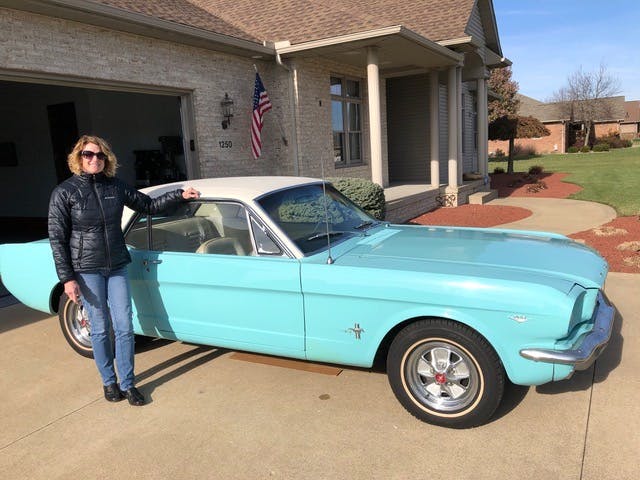
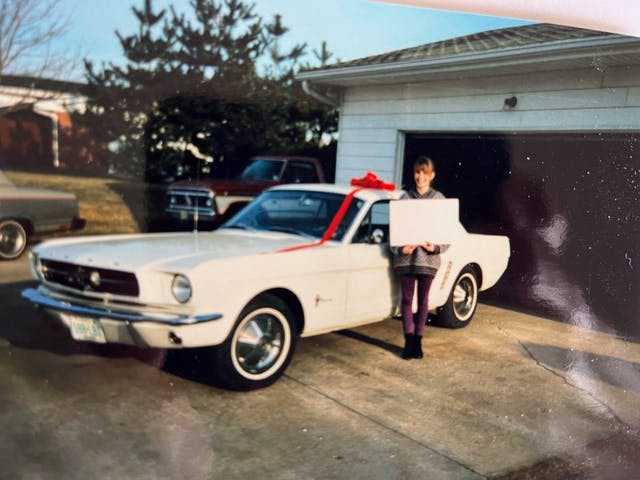
Hagerty: Were there any memorable family trips in your GT?
Whitmire: With my first wife and the two girls, we used to drive it to Florida once a year in March to visit my mother-in-law. It being a fastback, the back seats were low, and my daughters couldn’t see out. I made a platform from 3/8-inch plywood, with fold-down legs. I’d fold down the back seat, lay the platform on the carpet, and the two legs would sit on the floor behind the front seats. We’d throw a couple of big, thick blankets and a pillow or two on the plywood and let the girls ride back there the whole way. I would never do that today!
__
Car: 1965 Ford Mustang GT Fastback K-code
Owner: Bill Whitmire
Home: Grafton, Ohio
Delivery Date: July 15, 1965
Miles on Car: ~83,500
Are you the original owner of a classic car, or do you know someone who is? Send us a photo and a bit of background to tips@hagerty.com with ORIGINAL OWNER in the subject line—you might get featured in our next installment!
***
Check out the Hagerty Media homepage so you don’t miss a single story, or better yet, bookmark it. To get our best stories delivered right to your inbox, subscribe to our newsletters.


Cool story!
What a great story! How can you not love an enthusiast with an enthusiastic family?
50th Anniversary was the 2014. Ford lied as usual, to sell the 2015 now if you read any info, they say the 2024 is the 60th anniversary model. Making the 2014 the 50th.
Love to see family and the generations that follow loving a car and it being a bonding thing between everyone.